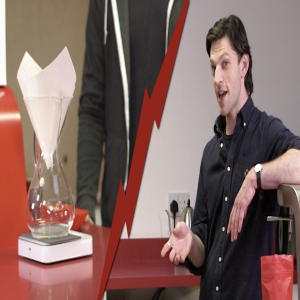
This farm was brand new to us not all that many years ago, and we're really happy to have been able to continue getting coffee from Las Delicias every year since. Although the farm itself is still relatively new to us in the grand scheme of things, the people behind it most certainly aren't. In fact, we've been working with them for well over ten years now.
The Mierisch family (whom you may know from such farms as Cerro Azul, Limoncillo, Mama Mina, Escondida and Milligros) have worked with us over that time to bring us delicious coffee, and continue to do so year after year.
Much of that deliciousness is thanks to their amazing processing, and Eleane Mierisch is in charge of that. She works in the family business, but she's never owned her own farm. Never, that is, until she acquired Las Delicias all for herself a few years ago.
The farm is located in the region of Jinotega at an average altitude of 1,450 metres above sea level. It's located next to another Mierisch farm that you might have heard of, which is called San José. We've had coffee from there a few times; we're definitely hoping to see more in the future, too.
Eleane knows the area very well, and she knows the land and what it's capable of producing. Add to this her passion for coffee, and you can start to understand why she wanted to produce coffee on a farm of her own.
The Longberry varietal is the fruit of some of the amazing experimental work that's taking place at Limoncillo, another Mierisch farm (as if I even need to tell you that!) To explain a little bit of the story behind it, I'll hand over to another Mierisch that I just so happen to know. Oh hi there, Erwin!
Here my 'story' begins back in mid-2001. I sound like a grandfather ...
My father and I were coming back from visiting some top farms in Nicaragua, as we sometimes did – and do – in order to learn from our neighbours. If we discover anything worthwhile, we then implement those things to improve efficiency and quality on our own farms.
As we drove past the UNICAFE experiment station Juanetillo, which had gone under, a man on the side of the road flagged us down and explained to us how the experiment station had closed down and that his 'severance' was tools and coffee seeds since they did not have the cash to pay him. He asked if we would be interested in helping him out by purchasing these items off of him. In all honesty, I was not very happy that my father forced me to stop to see what this man wanted; therefore, I was not very receptive to his offer, but I purchased a bag of seeds and old beaten up shovels. I gave no immediate thought to the 20 lb bag of coffee seeds that was labelled as JAVA.
My father later showed these seeds to our then-supervising agronomist Ing. Patricia Contreras, who had worked at that research station, and she was ecstatic. She told us about how great this coffee was, but also that it was not very productive nor resistant to disease, as she recalled from running this study at Juanetillo back in the '80s. She also said that the real name for it is Longberry, and that it has its roots in Ethiopia.
We began to run some more experiments – various altitudes and processing methods – and have been learning how to manage it since.
As far as we can tell the Longberry varietal is a Typica-type coffee because of its bean shape, as is the Geisha. Its physical appearance is a uniform seed that is elongated and has been described by several of our customers as an 'Ethiopian Long Berry type'.
This reminds me of a chocolate and lime sweet - it's got that zingy, zesty lime but backed up with dark chocolate and a silky texture. On the aftertaste, there's a little kick of red apple too.
- Country: Nicaragua
- Municipality: Lipululu
- Region: Jinotega
- Farm name: Las Delicias
- Producer: Eleane Mierisch
- Farm size: 20 manzanas (hectares)
- Coffee growing area: 20 hectares
- Altitude: 1,450 m.a.s.l.
- Varietal: Longberry
- Processing method: Washed
Clean cup: (1–8): 6
Sweetness: (1–8): 6.5
Acidity: (1–8): 6.5
Mouthfeel: (1–8): 7
Flavour: (1–8): 6.5
Aftertaste: (1–8): 7
Balance: (1–8): 6
Overall: (1–8): 6.5
Correction: (+36): +36
Total: (max. 100): 88
Roasting Information
Medium to medium-dark - through first, let it develop a little and finish the roast right at the end of the gap.
More Episodes
 2021-10-16
2021-10-16
 2021-09-25
2021-09-25
 2021-09-11
2021-09-11
 2021-07-31
2021-07-31
 2021-07-24
2021-07-24
 2021-07-17
2021-07-17
 2021-07-10
2021-07-10
 2021-07-03
2021-07-03
 2021-06-26
2021-06-26
 2021-06-19
2021-06-19
 2021-06-12
2021-06-12
 2021-06-05
2021-06-05
Create your
podcast in
minutes
- Full-featured podcast site
- Unlimited storage and bandwidth
- Comprehensive podcast stats
- Distribute to Apple Podcasts, Spotify, and more
- Make money with your podcast
It is Free
- Privacy Policy
- Cookie Policy
- Terms of Use
- Consent Preferences
- Copyright © 2015-2024 Podbean.com






